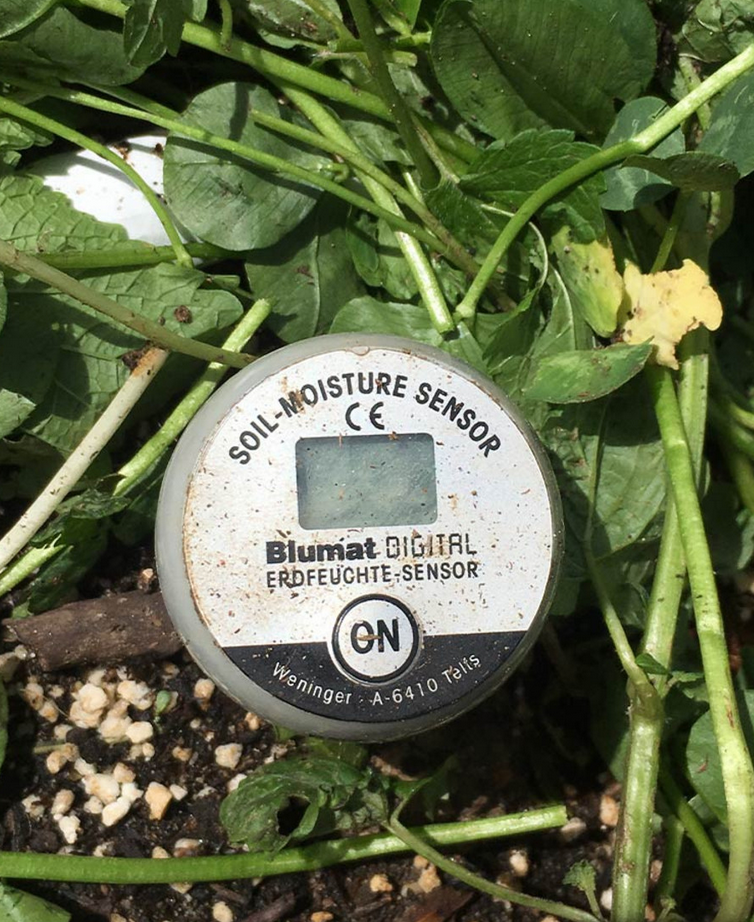How to Use a Moisture Meter to Spot Covert Water Damage in Your Residential property
How to Use a Moisture Meter to Spot Covert Water Damage in Your Residential property
Blog Article
Understanding the Value of a Wetness Meter in Preventing Mold And Mildew and Water Damage in your house
In the world of home maintenance, the visibility of wetness can frequently be a quiet yet formidable adversary, efficient in creating pervasive mold and mildew development and perilous water damages if left untreated. Amidst the relaxing setting of a home, concealed moisture concerns can brew under the surface, posturing a risk to both building and health. Geared up with the right tools and expertise, property owners can proactively deal with these prospective hazards. Understanding the value of a wetness meter in this fight is not merely an option yet a strategic necessity.

Significance of Moisture Discovery
Effective moisture discovery techniques are essential for protecting residential or commercial properties and preventing possible mold and mildew development and water damages. Dampness can leak into different structure materials, causing architectural problems and carcinogen - Moisture Meter. By making use of a dampness meter, homeowner can proactively determine areas susceptible to excess wetness, enabling prompt treatment and reduction techniques
Moisture meters provide precise readings of wetness degrees in various materials such as drywall, concrete, and timber. This data assists in identifying areas of concern, even in hard-to-reach or concealed locations. Early discovery of moisture build-up enables timely repair services or changes to avoid further damage.

Just How Moisture Meters Work
Dampness meters play a crucial function in the proactive recognition of excess wetness, helping in the prevention of possible mold development and water damage by giving precise readings of dampness levels in numerous building products. These gadgets work based upon various principles, depending on their type. Pin-type moisture meters, for example, have 2 pins that penetrate the product to determine the electrical resistance between them. When wetness exists, it enhances the product's conductivity, bring about a reduced resistance reading. Pinless dampness meters, on the various other hand, use electro-magnetic sensing units to scan the material without causing damage. These sensing units discharge electro-magnetic signals that permeate the product and determine the dielectric residential properties, showing moisture web content. Some progressed moisture meters pin both incorporate and pinless modern technologies for thorough moisture discovery. Understanding exactly how moisture meters feature is important for precise and prompt moisture level analyses, allowing reliable preventative measures versus mold and water damage.
Detecting Early Caution Indicators
Upon first evaluation of a building, recognizing subtle indications of excess dampness becomes vital in the very early detection of prospective mold and mildew development and water damage. Water spots can signify leakages or infiltration, while peeling off paint or wallpaper might be an outcome of dampness endangering the adhesion of these materials to the surface area. In addition, a boost in allergic reaction signs and symptoms or respiratory issues among residents may suggest the existence of mold due to excess wetness.


Stopping Mold Growth
Acknowledging early caution indicators of excess wetness within a building not only enables punctual detection of potential mold and mildew development and water damage yet additionally offers get redirected here as a positive measure in stopping the proliferation of mold and mildew. To effectively protect against mold growth, it is important to attend to any type of resources of dampness promptly.
Checking moisture levels in areas susceptible to wetness, such as cellars and crawl spaces, utilizing a wetness meter can additionally assist in early detection of elevated dampness degrees and potential mold growth. By taking proactive measures to prevent excess wetness and mold and mildew growth, home owners can guard their property and indoor air quality.
Advantages of Normal Surveillance
Normal monitoring of wetness degrees in a building can play a vital role in preserving a healthy and balanced indoor atmosphere and stopping potential mold and water damage. By consistently checking wetness levels, property owners can discover any kind of concerns quickly and take needed actions to avoid mold development and water damages.
Moreover, routine tracking enables house owners to track patterns and fads in moisture levels over time. By establishing a baseline and surveillance changes, individuals can identify any areas of issue or prospective vulnerabilities in the home's framework. This data-driven strategy makes it possible for targeted interventions and maintenance initiatives to attend to underlying problems before they escalate into even more substantial issues. Inevitably, the constant tracking of moisture levels encourages homeowners to protect their residential or commercial property, protect their health, and maintain the stability of their indoor environment.
Conclusion
In conclusion, making use of a dampness meter is crucial in protecting against mold and mildew and water damages in homes. By discovering read the full info here very early warning indications of moisture, property owners can take aggressive steps to stop mold and mildew development and costly fixings. Normal tracking with a dampness meter can assist maintain a healthy and balanced interior environment and secure the structural honesty of the home. It is a beneficial tool for ensuring the safety and security and wellness of citizens.
By utilizing a wetness meter, building proprietors can proactively determine locations vulnerable to excess moisture, allowing for timely intervention and mitigation methods.
Dampness meters give accurate readings of moisture levels in different materials such as drywall, concrete, and timber.Wetness meters play an essential duty in the positive identification of excess moisture, helping in the avoidance of potential mold growth and water published here damages by providing accurate readings of wetness levels in different building materials. Understanding how moisture meters feature is essential for precise and timely dampness level assessments, enabling efficient preventative measures against mold and mildew and water damages.
Keeping an eye on moisture levels in locations susceptible to moisture, such as basements and creep areas, making use of a dampness meter can also help in very early detection of raised dampness degrees and potential mold growth.
Report this page